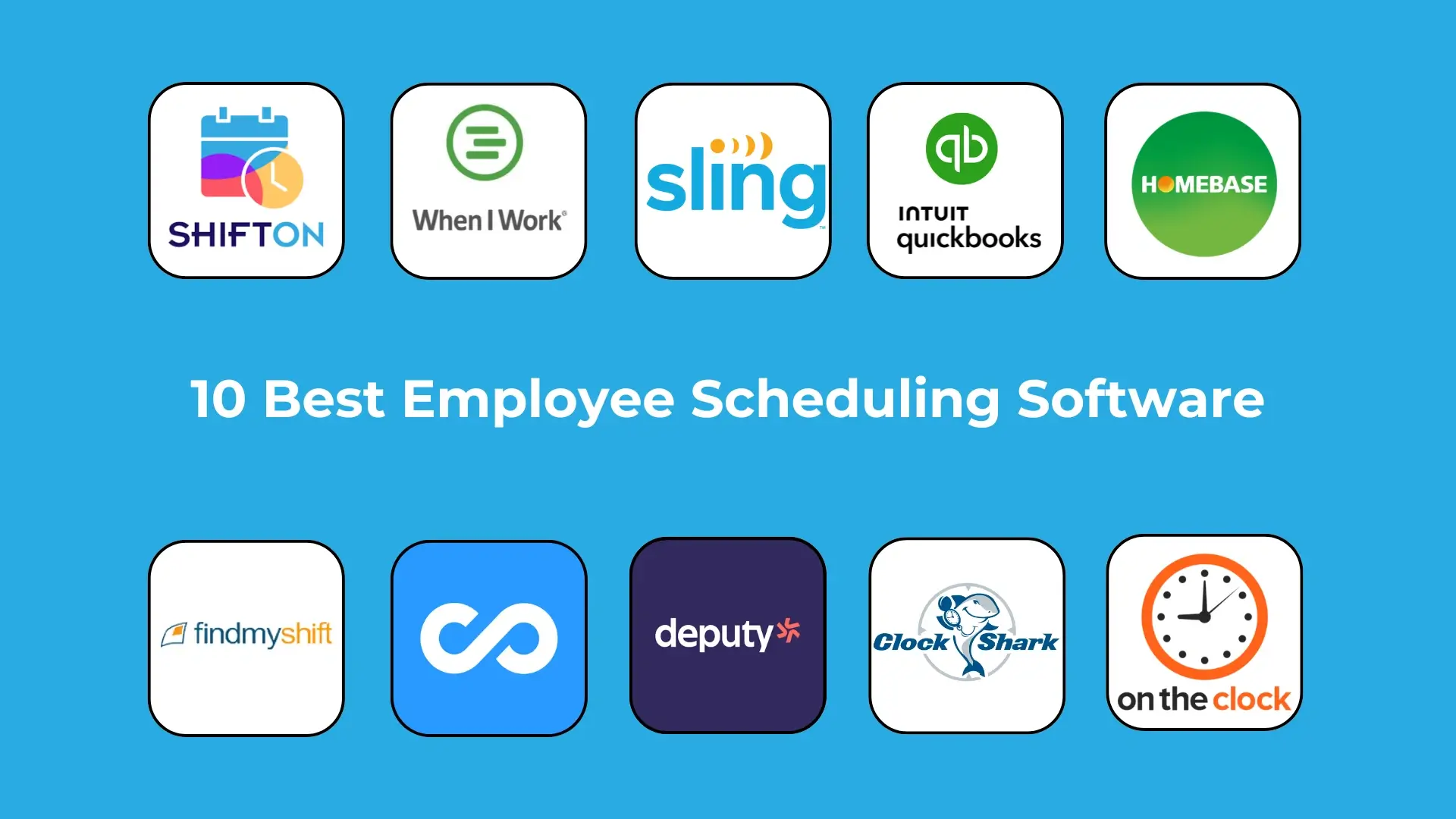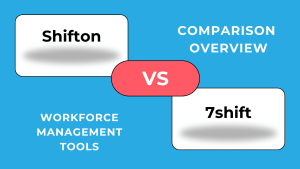Scaling a call center operation is a critical step for businesses experiencing growth, increasing call volumes, or expanding into new markets. A scalable contact center allows companies to handle more customer interactions efficiently, maintain service quality, and control operational costs.
However, scaling call center operations requires more than just hiring additional agents — it involves automation, process optimization, AI-driven solutions, and strategic workforce management. This guide covers 21 best practices for scaling a call center, helping businesses scale customer support while maintaining high service standards.
TL;DR
As businesses navigate the challenges of scaling customer support, choosing the right workforce management platform is crucial. Shifton isn’t just a scheduling tool — it’s a strategic partner that grows with your business, enabling seamless expansion while maintaining service excellence.
For those looking for a quick summary:
1) Scaling call center operations involves expanding the workforce, implementing new technologies, and optimizing workflows.
2) Automation and AI play a significant role in creating a scalable contact center while keeping costs manageable.
3) Monitoring KPIs, identifying bottlenecks, and using omnichannel support improve call center operational efficiency.
4) Outsourcing, self-service options, and predictive analytics help businesses scale customer service effectively.
For a detailed breakdown of how to scale a call center, continue reading the 21 expert tips below.
Understanding Call Center Scaling
A scalable contact center must adapt to increasing customer demands while maintaining service quality and operational efficiency. Scaling customer support and sales teams involves several strategies:
- Adding agents – Hiring and training new representatives to handle increased workload.
- Implementing new technologies – Using AI, chatbots, and automation solutions to improve efficiency.
- Optimizing workflows – Streamlining processes, improving call routing, and enhancing workforce management.
Situations That May Trigger a Need to Scale a Call Center
- Rapid Business Growth Leading to Increased Call Volumes
As businesses expand, customer inquiries rise, requiring a scalable contact center that can handle higher interaction volumes without delays.
- Expansion Into New Markets or Product Lines
New product launches or market expansion can generate additional customer inquiries, necessitating scaling call center capabilities.
- Seasonal Spikes or Fluctuations in Customer Demand
Retail, travel, and e-commerce businesses experience seasonal call surges, requiring flexible staffing and scaling customer support solutions.
- Introduction of New Customer Service Channels (E.G., Chat, Social Media)
Customers expect omnichannel support, including live chat, email, and social media, which necessitates scalable contact center strategies.
How to Scale Call Center Operations: 21 Best Practices & Tips
1. Implement Predictive Analytics
Predictive analytics is essential for a scalable contact center as it helps forecast call volume, customer behavior, and staffing needs. By analyzing historical data, AI-powered tools can anticipate peak periods and adjust staffing levels accordingly.
Benefits of using predictive analytics in scaling call centers:
- Reduce wait times by ensuring enough agents are available during peak hours.
- Optimizes staffing costs by preventing overstaffing or understaffing.
- Enhances customer satisfaction by proactively addressing service needs.
Companies using predictive analytics can scale customer service operations efficiently while maintaining high service standards.
2. Embrace Omnichannel Support
To achieve true call center operational efficiency, businesses must adopt omnichannel support strategies. Modern customers expect seamless interactions across phone, email, chat, and social media.
How omnichannel support helps in scaling call center operations:
- Allows customers to switch communication channels without repeating information.
- Distribute workload across multiple platforms, reducing phone call congestion.
- Improves customer engagement by offering personalized and convenient support options.
A scalable contact center integrates omnichannel solutions to ensure a smooth and consistent customer experience.
3. Deploy a Chatbot for 24/7 Support
AI-powered chatbots enhance contact center operational efficiency by handling common inquiries, appointment scheduling, and basic troubleshooting without human intervention.
Advantages of using chatbots in a scalable contact center:
- Reduces agent workload, allowing them to focus on complex issues.
- Provides 24/7 support, improving response times outside business hours.
- Cuts operational costs by minimizing the need for additional human agents.
Businesses looking to scale customer support should invest in AI-driven chatbots to automate repetitive tasks and enhance customer interactions.
4. Use Generative AI to Assist Agents
Generative AI helps managing call center agents by providing real-time call scripting, sentiment analysis, and automated response suggestions.
How generative AI supports a scalable contact center:
- Assists agents with personalized customer responses in real-time.
- Reduce handle time by offering suggested solutions based on customer queries.
- Helps train new agents faster, ensuring consistency in customer service quality.
By leveraging AI-driven automation, businesses can improve call center adherence best practices and provide scalable customer service solutions.
5. Invest in Agent Training and Development
Scaling a call center operation isn’t just about hiring more agents — it’s about ensuring existing staff can handle increased complexity.
Key strategies for effective agent training in a scalable contact center:
- Regular coaching and mentoring to improve problem-solving skills.
- Simulated customer interactions to prepare agents for real-world scenarios.
- Knowledge-sharing sessions to enhance teamwork and efficiency.
Investing in continuous agent development ensures high-quality service as businesses scale customer support operations.
6. Optimize Call Routing and Queuing
A scalable contact center must ensure that calls are directed to the right agent at the right time. Optimizing call routing and queuing reduces wait times and improves first-call resolution rates.
Best practices for optimizing call routing in scaling call centers:
- Use skill-based routing to connect customers with agents best suited to handle their issues.
- Implement AI-driven call distribution to analyze customer history and route calls accordingly.
- Prioritize VIP customers by offering them shorter wait times and dedicated agents.
By streamlining operations call center processes, businesses can enhance customer satisfaction while reducing operational bottlenecks.
7. Monitor Real-Time Metrics
Effective call center operations management requires continuous performance monitoring. By tracking real-time call center metrics best practices, businesses can identify inefficiencies and adjust strategies accordingly.
Key real-time call center metrics to monitor:
- Average handle time (AHT) – Measures the time agents take to resolve customer issues.
- First-call resolution (FCR) – Tracks how many inquiries are resolved without follow-ups.
- Customer satisfaction score (CSAT) – Evaluates service quality based on customer feedback.
- Abandonment rate – Measures how many customers hang up before speaking with an agent.
Analyzing these metrics enables businesses to scale customer support more effectively while ensuring a high-quality customer experience.
8. Implement Self-Service Options
A scalable contact center should offer self-service solutions to reduce agent workload and enhance customer service scale.
Self-service options for scaling call center operations:
- Interactive voice response (IVR) systems – Automates call routing based on customer input.
- Knowledge bases and FAQs – Provide customers with solutions without agent intervention.
- AI-powered virtual assistants – Guides users through troubleshooting steps.
Self-service options help businesses scale customer service efficiently while keeping costs under control.
9. Appoint a Customer Service Administrator
As businesses grow, managing call center agents becomes more complex. A customer service administrator ensures that operations call center processes run smoothly.
Responsibilities of a customer service administrator in a scalable contact center:
- Monitoring agent performance and identifying training opportunities.
- Overseeing technology implementation to improve efficiency.
- Ensuring adherence to service-level agreements (SLAs) and compliance requirements.
With strong leadership, businesses can improve operational efficiency and scale customer support without compromising quality.
10. Engage in Proactive Messaging
A scalable contact center doesn’t just respond to customer inquiries — it anticipates them. Proactive messaging involves reaching out to customers before they experience issues.
How proactive messaging supports scaling call center operations:
- Notifies customers about delays or service outages before they call.
- Provides product updates and new feature announcements via email or SMS.
- Offers personalized recommendations based on customer history.
Proactively addressing customer concerns reduces call volume, enhances customer trust, and supports scaling customer support effectively.
11. Build a Knowledge Base
A scalable contact center should have a comprehensive knowledge base that allows both agents and customers to quickly find solutions. A well-organized knowledge base reduces call volumes, shortens handling times, and improves first-call resolution rates.
Best practices for creating an effective knowledge base:
- Include FAQs, troubleshooting guides, and instructional videos for common issues.
- Organize content by category to ensure easy navigation for customers and agents.
- Regularly update the database based on customer inquiries and feedback.
- Make the knowledge base accessible across multiple channels (website, app, chatbot).
By equipping customers and agents with the right information, businesses can scale customer support while enhancing efficiency.
12. Create a Community Forum
Encouraging customers to help each other through a community forum is a great way to scale customer service without overwhelming agents. Many scalable contact center strategies involve integrating user forums where customers can ask questions and share solutions.
Benefits of creating a customer forum:
- Reduces dependency on agents by enabling peer-to-peer support.
- Improves brand loyalty by fostering an engaged customer community.
- Helps identify common issues that may require process improvements.
By leveraging community-driven support, businesses can increase efficiency while keeping operational costs low.
13. Consider Outsourcing
Outsourcing customer support can be a strategic move for scaling call center operations, especially when rapid expansion is needed.
Benefits of Outsourcing for Scaling Operations:
- Reduces operational costs compared to in-house hiring.
- Provides access to multilingual agents for global customer support.
- Enables 24/7 customer service without requiring internal teams to work round the clock.
Why Outsourcing Supports Growth:
- Faster scalability – Businesses can quickly expand support teams without long hiring processes.
- Flexible staffing – Allows companies to scale customer service up or down based on demand.
- Specialized expertise – Third-party service providers often have trained professionals ready to handle inquiries.
Make Your Outsourcing Work for Company Scalability:
- Select a provider with experience in your industry.
- Ensure proper training and quality control measures are in place.
- Maintain strong communication between in-house and outsourced teams.
Challenges to Scalability When Outsourcing a Call Center:
- Risk of inconsistent brand messaging if agents lack proper training.
- Limited visibility into outsourced team performance without tracking tools.
- Potential cultural and language barriers if agents aren’t well-matched to customer demographics.
While outsourcing is a great tool for scaling call center automation solutions, businesses must carefully manage outsourced operations to maintain quality.
14. Scale Your Customer Support While Controlling Costs with AI
AI-driven automation is key to scaling customer support efficiently while keeping expenses manageable.
Ways AI helps create a scalable contact center:
- Chatbots handle repetitive inquiries, freeing up agents for complex tasks.
- AI-powered analytics optimize staffing levels based on real-time data.
- Voice assistants streamline call routing, reducing wait times.
AI enhances contact center operational efficiency while lowering operational costs, making it an essential tool for how to scale a call center effectively.
15. Support Your Support Team
A scalable contact center isn’t just about adding technology — it’s about taking care of the human workforce behind customer service. Happy, well-supported agents provide better service and stay with the company longer, reducing turnover costs.
How to support customer service agents during scaling:
- Provide mental health and stress management resources.
- Offer performance-based incentives and career growth opportunities.
- Ensure balanced workloads to prevent burnout.
- Foster a positive workplace culture with open communication.
A well-supported team ensures higher efficiency, improved agent satisfaction, and better customer interactions as businesses scale customer service operations.
16. Review Your KPIs
A scalable contact center must continuously track and analyze performance metrics to ensure operational efficiency and customer satisfaction. Regularly reviewing call center metrics best practices helps businesses identify trends, improve processes, and adjust scaling strategies.
Essential KPIs for scaling call center operations:
- First-Call Resolution (FCR): Measures how many inquiries are resolved on the first interaction.
- Average Handle Time (AHT): Tracks the efficiency of call resolution.
- Customer Satisfaction Score (CSAT): Provides insights into service quality.
- Call Abandonment Rate: Identifies the percentage of callers who hang up before reaching an agent.
- Agent Occupancy Rate: Ensures agents are neither overworked nor underutilized.
By monitoring these KPIs, businesses can make data-driven decisions to scale customer support effectively.
17. Identify the Bottlenecks in Your Process
Scaling call center operations management requires identifying and resolving bottlenecks that slow down service delivery.
Common call center bottlenecks include:
- Long wait times due to inefficient call routing.
- High agent turnover leading to frequent training gaps.
- Lack of self-service options, increasing agent workload.
- Inconsistent data tracking, preventing accurate reporting.
To ensure contact center operational efficiency, businesses must regularly audit processes, identify weak points, and implement solutions before expanding further.
18. Utilize Ticket Swarming
Traditional call centers follow a tiered support system, where customers are escalated through multiple levels of agents. Ticket swarming eliminates this structure by allowing multiple agents to collaborate on complex issues in real time, leading to faster problem resolution and better customer satisfaction.
Benefits of ticket swarming in scaling call center operations:
- Speeds up resolution times by eliminating unnecessary escalations.
- Improves knowledge sharing between agents, enhancing training.
- Creates a collaborative work environment, leading to better service quality.
Implementing ticket swarming ensures that scaling customer support doesn’t compromise issue resolution speed or service quality.
19. Automate Recurring Tasks
Automation is essential for scaling call center automation solutions while keeping operations streamlined.
Tasks that should be automated in a scalable contact center:
- Call logging and ticket creation to reduce manual data entry.
- Automated follow-ups to check on unresolved customer issues.
- AI-driven email responses for common inquiries.
- Auto-generated reports to track key performance indicators.
By automating repetitive tasks, businesses free up agents to handle more complex customer needs, making scaling customer success easier and more cost-effective.
20. Hire Qualified Candidates
As businesses scale customer service, hiring the right agents becomes critical. Scaling too fast with underqualified staff can lead to poor service quality and high turnover rates.
Best practices for hiring during call center expansion:
- Look for candidates with strong problem-solving skills and emotional intelligence.
- Prioritize applicants with prior customer service experience in relevant industries.
- Use AI-driven hiring tools to screen applicants for necessary competencies.
- Invest in a structured onboarding program to ensure new hires adapt quickly.
The True Cost of Hiring More Agents
Hiring additional agents isn’t just about salary — it also includes recruitment, training, and retention costs. If businesses scale customer support without proper workforce planning, they risk:
- Increased training expenses due to high turnover.
- Lower productivity from inexperienced hires.
- Longer resolution times, impacting customer satisfaction.
To manage costs, businesses should balance hiring new agents with AI-powered solutions and workflow optimization.
21. Strive for Continuous Improvement
A truly scalable contact center doesn’t stop improving once it reaches a new level of growth. Instead, businesses should continuously refine their processes, technologies, and workforce strategies to stay competitive.
How to implement continuous improvement in a scalable contact center:
- Regularly collect feedback from customers and agents.
- Analyze performance data to identify areas needing refinement.
- Experiment with new technologies, such as AI-driven insights and automation.
- Benchmark against industry leaders to stay ahead of the competition.
Scaling isn’t a one-time event — it’s an ongoing process that ensures businesses remain adaptable and prepared for future growth.
What Influences Call Center Scalability?
Scaling call center operations requires more than just hiring additional agents — it involves optimizing technology, workflows, and workforce management. Several factors influence how effectively a scalable contact center can grow while maintaining efficiency and service quality.
How to Overcome Challenges in Scaling Call Centers
Expanding a call center operation comes with obstacles that can impact service quality and agent productivity. Businesses must proactively address these challenges to ensure smooth scaling.
Common challenges in scaling call centers and how to overcome them:
- High agent turnover – Invest in training and career growth opportunities to retain skilled employees.
- Inefficient workflows – Implement automation to reduce repetitive tasks and improve response times.
- Customer service inconsistencies – Standardize processes and use AI-driven tools to maintain quality.
- Limited technology infrastructure – Upgrade systems to support increased call volumes and omnichannel interactions.
- Rising operational costs – Optimize workforce planning and use AI-powered analytics to reduce overhead.
By addressing these challenges, businesses can create a scalable contact center that adapts to growth without sacrificing service quality.
Planning for Future Scalability
Long-term success in call center operations management requires a future-proof strategy that supports continued expansion.
Key elements of planning for future scalability:
- Adopt AI and automation early to reduce dependency on manual processes.
- Develop a workforce training strategy to ensure agents stay adaptable.
- Regularly review KPIs to identify trends and adjust scaling efforts accordingly.
- Invest in cloud-based solutions for flexibility and remote workforce integration.
- Expand self-service options to handle growing customer demands efficiently.
Proactive planning ensures that businesses scale customer support in a sustainable and cost-effective manner.
6 Reasons Why It Is Necessary to Care About Optimizing Contact Centers
A well-structured scalable contact center brings multiple advantages to businesses looking to improve service quality, operational efficiency, and revenue.
- Improved Customer Experience and Retention. A responsive and efficient call center operation ensures positive customer interactions, increasing loyalty and brand trust.
- Increased Efficiency. Automation, AI, and self-service options help streamline operations, allowing businesses to handle higher call volumes efficiently.
- Enhanced Agent Productivity and Satisfaction. When businesses provide the right tools and training, agents can work more effectively, leading to better performance and reduced burnout.
- Reinforced Compliance. Optimized call center operations management helps businesses stay compliant with industry regulations and data security laws.
- Data-Driven Business Decisions. Scaling with real-time analytics and reporting tools enables businesses to make informed decisions on workforce planning, customer service strategies, and operational improvements.
- Reduced Costs. Efficient scaling prevents over-hiring, optimizes agent workloads, and leverages AI solutions, reducing operational expenses while maintaining service quality.
What Are the Risks of Choosing Not to Optimize Your Contact Center?
Failing to optimize a call center operation can lead to inefficiencies, dissatisfied customers, and financial losses. Without proper scalability planning, businesses risk falling behind competitors and damaging their brand reputation.
Damaging Customer Trust
Customers expect quick and efficient support when reaching out to a contact center. If response times increase due to poorly managed scaling efforts, customers may lose trust in the brand.
Consequences of failing to scale customer support properly:
- Longer wait times, leading to frustration and negative reviews.
- Inconsistent service quality across different communication channels.
- Higher abandonment rates, reducing customer engagement.
Missing Out on Top Talent
A scalable contact center attracts and retains top-tier talent by offering structured training, career growth, and performance incentives. Without an optimized call center operational efficiency strategy, businesses may struggle to hire and retain skilled agents.
Risks of failing to attract top talent:
- Higher turnover rates, leading to increased training costs.
- Reduced agent engagement, affecting customer service quality.
- Inability to meet service-level agreements (SLAs) due to staffing shortages.
Lagging Behind the Competition
In today’s competitive business environment, companies that fail to invest in scaling call center automation solutions risk losing customers to brands with more responsive and efficient customer service.
How lack of optimization impacts competitiveness:
- Inability to handle peak periods, leading to lost business opportunities.
- Failure to implement AI and automation, slowing down service response times.
- Lack of omnichannel support, making it harder to engage modern customers.
Impacting Brand Reputation
A poorly scaled contact center operation influences brand perception, leading to negative reviews and declining customer loyalty. Customers who experience long wait times or unresolved issues are more likely to share their dissatisfaction publicly.
Effects of poor call center operations on brand reputation:
- Low customer satisfaction scores, leading to decreased repeat business.
- Negative online reviews and social media complaints.
- Decreased customer trust, impacting long-term business success.
Losing Revenue
A scalable contact center ensures that businesses can handle growing customer demand without increasing operational costs unnecessarily. Without proper contact center operations management, businesses risk financial instability.
Revenue risks of not optimizing call center operations:
- Lost sales opportunities due to long call wait times and unresolved issues.
- Increased operational costs from inefficient staffing and outdated technology.
- Higher churn rates, leading to declining customer retention and lifetime value.
Optimizing call center operations is not just about improving efficiency — it’s about safeguarding revenue, maintaining customer loyalty, and staying competitive in the market.
Scaling Up Your Call Center Operations: How Shifton Supports Growth
Shifton is designed to help businesses scale customer support by automating workforce management, improving scheduling efficiency, and providing real-time insights. Our platform adapts to the changing needs of contact centers, ensuring smooth operations at every stage of growth.
1. Flexible Workforce Management
With Shifton, managing call center agents becomes effortless. The intuitive platform allows businesses to:
- Automate shift scheduling to optimize staffing levels.
- Assign tasks dynamically based on agent availability and expertise.
- Adapt to seasonal demand fluctuations without disrupting service quality.
This flexibility ensures businesses maintain call center operational efficiency, even as they expand.
2. Multi-Location Coordination
As businesses scale customer support, handling operations call center activities across multiple locations can become complex. Shifton’s multi-location functionality allows managers to:
- Oversee agents working in different geographic regions from a single dashboard.
- Ensure shift adherence to best practices by standardizing scheduling rules.
- Streamline communication across remote and in-office teams.
With centralized workforce management, businesses can scale efficiently while maintaining contact center operational efficiency.
3. Customizable Modules for Call Center Operations Management
No two call center operations are the same. Shifton offers customizable modules that businesses can integrate based on their scaling requirements, such as:
- Automated reporting for tracking KPIs and call center metrics best practices.
- Shift management tools to enhance agent performance monitoring.
- Task allocation features for optimizing daily operations.
By tailoring contact center operations to specific business needs, Shifton ensures that companies invest only in what truly supports their growth.
4. Real-Time Performance Monitoring
Scaling a call center operation without proper insights can lead to blind spots in workforce management. Shifton provides real-time analytics, empowering managers with:
- Live data on agent performance to identify areas for improvement.
- Call volume tracking to optimize staffing allocation.
- Attendance and adherence monitoring to maintain workforce efficiency.
With real-time tracking, businesses can follow call center adherence best practices, ensuring they deliver consistent customer service at scale.
5. Seamless Integration with Existing Contact Center Tools
As businesses scale customer support, integrating new technologies into existing operations call center systems becomes essential. Shifton’s API-friendly infrastructure allows businesses to:
- Connect scheduling tools with CRM platforms for enhanced customer insights.
- Synchronize workforce data with payroll systems for accurate compensation tracking.
- Enhance automation workflows to reduce manual administrative tasks.
By supporting scaling call center automation solutions, Shifton enables seamless transitions as businesses grow.
6. Remote Workforce Management
In modern call centre operations, remote and hybrid work models are becoming the norm. Shifton is designed to support distributed teams, helping managers:
- Track employee activity across different time zones.
- Ensure shift adherence with geolocation-based clock-ins.
- Maintain communication consistency for remote agents.
By offering a scalable remote workforce solution, businesses can expand operations globally without logistical challenges.
Take your call center operations to the next level with Shifton — your trusted partner in call center scalability.
More detailed on the topic:
– Call Center & Customer Experience Conferences
– What is Call Center
– Call Center Reporting and Analytics
– The Ultimate Guide to Call Center Schedule Adherence
– 20 Effective Strategies to Reduce Call Volume in Call Center
– Call Center Management
– 10 Best Call Center Scheduling Software Solutions
– How To Improve The Efficiency Of Call Center Employees
– Telemarketing And Call Center Reporting
– How Shifton Helps Optimize Call Center Operations
– Call Center Work Schedule Management













































